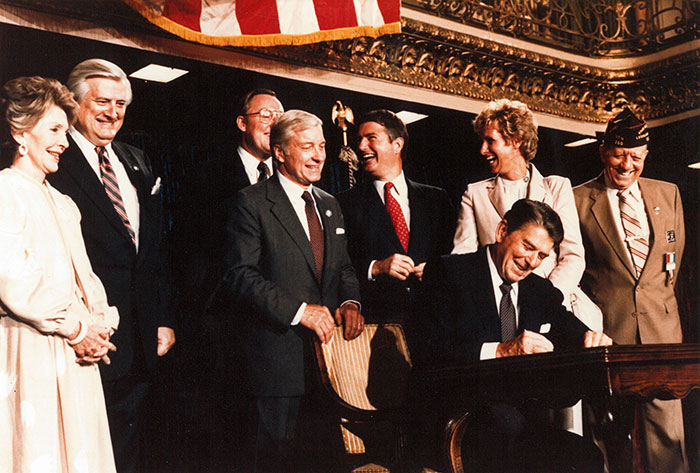America's First National Heritage Area
On August 24, 1984, President Ronald Reagan held a press conference in the Conrad Hilton Hotel Grand Ballroom in Chicago and signed the bill that established the I&M Canal National Heritage Area, America’s first National Heritage Area. In his dedication speech, Reagan referred to the just-created National Heritage Area designation as “a new kind of national park” that combined preservation, conservation, recreation and economic development.
Designated by Congress, National Heritage Areas (NHAs), of which there are now more than 60, are regions where natural, cultural, and historic resources combine to form cohesive, nationally important stories. Unlike national parks, NHAs are made up of existing communities, not federally owned land (though the NHA may contain parks or other federally owned property within its boundaries).

As of 2022, NHAs have been integrated into an official system of National Heritage Areas within the National Park Service. This system is made up of public-private partnerships (government agencies supporting local, non-government NHA coordinating entities) with the local entity taking the lead in determining how to make the area’s heritage and stories relevant to local interests and needs as well as to visitors from across the country and globe.
Our own National Heritage Area encompasses 862 square miles that include 5 counties and 60 communities that all owe their growth to the I&M Canal (you can read about its history here). The coordinating entity of the I&MCNHA is the Canal Corridor Association, which is 501(c)3 nonprofit.
Our organization does receive federal funding BUT must match that funding dollar for dollar with local funds. So if you believe in our mission to preserve and promote the region’s natural resources and stories, please consider donating.

